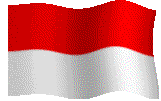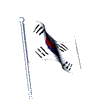Thinking About Experience
The principles of the Direct Method that can be inferred from our observations will be listed on the column on the right.
Observations | Principles |
1. The students read aloud a passage about United States Geography. | Reading skill will be developed through practice to speaking. Language is primarily speech. Culture consists of more than fine arts (e.g. the students study geography and cultures attitudes). |
2. The student’s points to a part of the map after each sentence is read. | Object (e.g. regalia or pictures) present in the immediate classroom environment should be used to help students understand the meaning. |
3. The teacher uses the target language to ask the students if they have a question. The students use the target language to ask their question. | The native language should not be used in the classroom. |
4. The teacher answers the students' questions by drawing on the blackboard or giving examples. | The teacher should demonstrate, not explain or translate. It is desirable that students make a direct association between the target language and meaning. |
5. The teacher asks questions about the map in the target language, to which the students reply in a complete sentence in the target language. | Students should learn to think in the target language as soon as possible. Vocabulary is acquired more naturally if students use it in full sentences, rather than memorizing words list. |
6. Students ask questions about the map. | The purpose of language learning is communication. |
7. The teacher works with the students on the pronunciation of ‘Appalachian’ | Pronunciation should be work on right from the beginning of language instruction. |
8. The teacher corrects a grammar error by asking the students to make a choice. | Self-correction facilities language learning. |
9. The teacher asks questions about the students; students ask each other questions | Lessons should contain some conversational activity |
10. The students fill in blanks with prepositions practiced in the lesson. | Grammar should be taught inductively. There may never be an explicit grammar rule given. |
11. The teacher dictates a paragraph about | Writing is an important skill, to be developed from the beginning of language instruction. |
12. All of lessons of the week involve | The syllabus is based on situations or topics, not usually on linguistic structures. |
13. A proverb is used to discuss how people in the | Learning another language also involves learning how speakers of that language live. |
REVIEWING THE PRINCIPLES
- What are the goals of teachers who use the Direct Method?
Teachers who use the Direct Method intend the students’ learn how to communicate in the target language.
- What is the role of the teacher? What is the role of the students?
The teacher and the students are more like partners in the teaching/learning process.
- What are some characteristic of the teaching/learning process?
When the teacher introduces a new target language word or phrase, he demonstrates its meaning through the use of regalia, pictures, or pantomime; he never translates it into native language.
- What is the nature of student-teacher interaction? What is the nature of student-student interaction?
The initiation of the interaction goes both ways, from teacher to students and from students to teacher, although the latter is often teacher-directed. Students converse with one another as well.
- How are the feelings of the students dealt with?
There are no principles of the method which method to this area.
- How is language viewed? How is culture viewed?
Language is primarily spoken, nor written. They also study culture consisting of the history of the people who speak the target language, the geography of the country, where the language is spoken.
- What areas of language are emphasized? What language skills are emphasized?
Vocabularies are emphasized over grammar. Although work on all four skills (reading, writing, speaking, and listening) occurs from the start, oral communication is seen as basic.
- What is the role of the students’ native language?
The students’ native language should not be used in the classroom.
- How is evaluation accomplished?
Students are asked to use the language, not to demonstrate their knowledge about the language.
- How does the teacher respond to student error?
The teacher, employing various techniques, tries to get students to self-correct whenever possible.
REVIEWING THE TECHNIQUES
· Reading aloud
· Question and answer exercise
· Getting students to self-correct
· Conversation practice
· Fill-in-the-blank exercises
· Dictation
· Map drawing







































0 komentar:
Posting Komentar